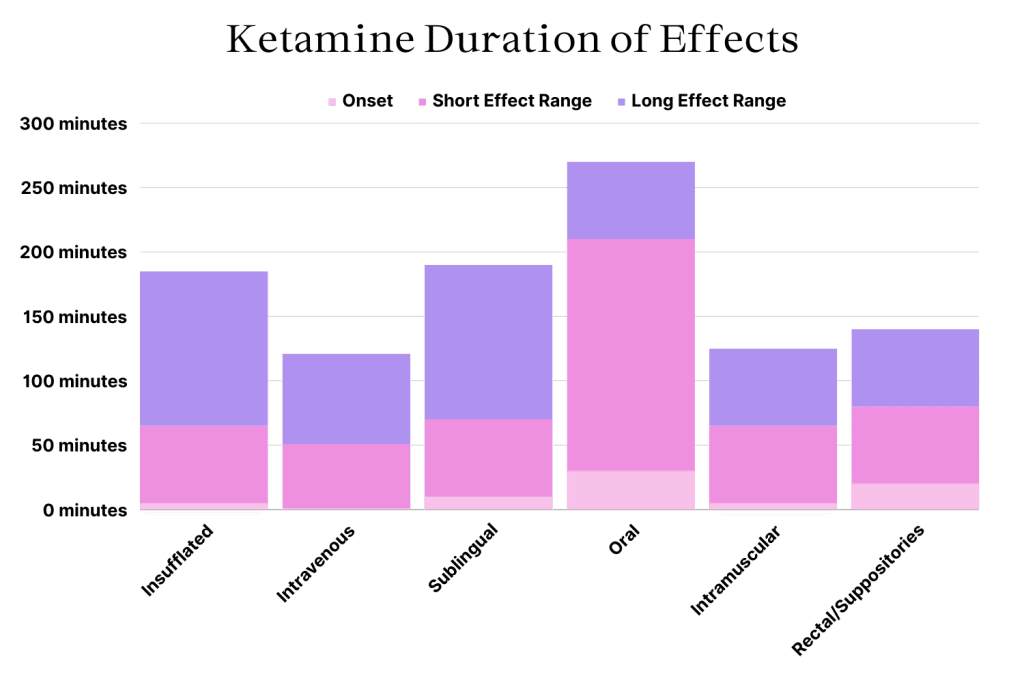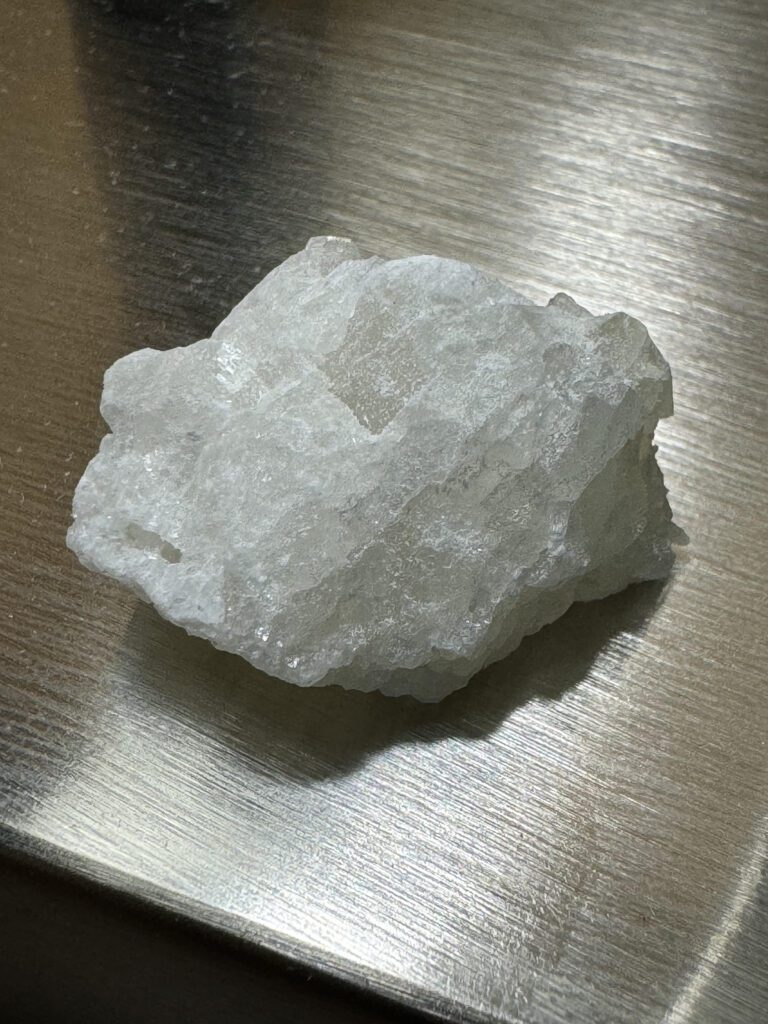
Ketamine has been around since the 1960s where it was used exclusively as a surgical anesthetic.
Over the past three decades, there’s been a growing interest in ketamine as a recreational hallucinogenic and dissociative substances.
Even more recently, ketamine has been shown to offer a unique mechanism for treating depression — unlike anything we’ve ever seen before.
In this article, we’ll cover everything you need to know about ketamine. How it works, what the basic dosages are for each level of effects, and more.
What is Ketamine?
Ketamine is classified as a dissociative hallucinogenic — which distorts the perception of sights, sounds, emotions, and decouple one’s first-person experience from reality. Users feel “outside their body.”
Chemically-speaking, ketamine is a member of the larger arylcyclohexylamine class of “drugs”. This group includes other popular compounds like PCP (phencyclidine), DCK (deschloroketamine), 2-FDCK (2-fluorodeschloroketamine), and MXE (methoxetamine).
In medicine, ketamine is used as an analgesic. It doesn’t directly block pain signals like an opiate — instead, dissociative analgesics disconnect the thalamus from the cortex. When this happens, the body still feels pain, but the brain simply “doesn’t care.” We don’t actually feel bothered by the pain.
Experts on the use of ketamine, such as Albert Dahan (professor of anesthesiology at The University of Leiden), suggest ketamine to be “one of the best painkillers ever made.”
Beyond its use as a painkiller, ketamine is used as a recreational substance. The experience changes according to the dose.
Lower doses feel a lot like being drunk on alcohol.
Higher doses are more similar to psychedelics like DMT or salvia, but with a distinct dissociative action on top of any psychedelic visuals or effects.
A high dose of ketamine can lead to an experience called a “K-hole” — which is an extremely intense dissociative hallucination that can be both beautiful and terrifying all at once.
More recently, research has shown that low doses of ketamine offer powerful antidepressant qualities. It works through entirely different mechanisms than conventional antidepressant medications.
Unlike most substance, ketamine targets many different receptors at once, making it very difficult to study exactly what’s going on or how it works.
Ketamine: Specs & Technical Details
| Active Ingredient | (S & R)-2-(2-chlorophenyl)-2-(methylamino) cyclohexanone |
| Level of Risk | Moderate |
| Other Names | Special K, Cat Tranquilizer, Vitamin K |
| Duration of Effects | 1 – 3 hours |
What Does Ketamine Feel Like?
The effects of ketamine are dependent on the dose you use, your individual body weight and metabolism, how often you use it, what form you’re using (intravenous, troches/lozenges, intranasal), and whether you’re using ketamine alone or with other substances.
In lower doses, the effects of ketamine resemble alcohol intoxication. It causes feelings of mild euphoria, as well as visual and auditory perceptual changes. It makes users feel as though they’re floating or operating on autopilot. Low doses are mildly stimulating and can make users feel more social or energetic.
Higher doses of ketamine feel very different. They can make you feel withdrawn and introverted. People often report feeling very light and floaty and often experience intense hallucinations, blurred vision, and out-of-body experiences.
In very high doses, people experience what’s commonly referred to as a K-hole — which involves strong out-of-body hallucinations. This is a demonstration of the dissociative aspect of ketamine to its fullest extent. Users feel as though they’re perpetually falling into blackness. It’s as if the fabric of time, as well as one’s sense of self is dissolving.
The effects of ketamine may include:

- Reduced anxiety
- Euphoria
- Déja Vu
- Delusions & ego inflation
- Disinhibition
- Memory loss
- Spatial disorientation
- Altered perception of time & space
- Spontaneous bodily sensations (tingling, pulsating)
- A feeling of being light or floating
- Reduced sensation of pain
How Long Does Ketamine Last?
Ketamine is not a long-lasting substance. The effects usually take between 30 and 60 minutes to reach their full effect, which remain in place for about an hour before starting to taper off. These numbers will vary depending on the form of administration.
- Insufflated (snorted) — Effects kick-in within 5–15 minutes. Peak effect reached in 30 minutes. Total duration between 1 and 3 hours depending on dose.
- Intravenous (IV) — Effects kick in within 60 seconds. Peak reached in 3–5 minutes. Total duration between 40 and 60 minutes. Some lingering effects up to 2 hours.
- Sublingual — Effects from troches or lozenges kick in within 5-10 minutes. Peak effect reached in 30 minutes. Total duration between 1–3 hours depending on dose.
- Oral — Effects kick in within 20-30 minutes. Peak reached by 60 minutes. Total duration 2–4 hours.
- Intramuscular (IM) — Effects kick in within 1–5 minutes. Peak effects in 10–15 minutes. Total duration up to 2 hours.
- Rectal/Suppositories — Effects kick in within 15–20 minutes. Peak effects reached in 30-40 minutes. Total duration 1–2 hours.

How Long Does Ketamine Remain in the System?
Ketamine is rapidly metabolized by the liver into norketamine and other inactive metabolites, which are then eliminated through the urine.
The half-life of ketamine is 2.5 hours and it takes about 5 or 6 half-lives before a drug is completely cleared from the body. This means ketamine can remain detectable in the bloodstream for around 15–24 hours, depending on factors like dosage and frequency of use.
People who use ketamine often will take longer for the substance to be eliminated from the body entirely. This can take up to 48 hours in the bloodstream, and up to 72 hours in the urine.
All of this means that ketamine will typically show up on a drug test up to 24 hours for saliva tests, 48 hour later for urine and blood tests, and 4 months for hair or fingernail tests.
What’s The Dose of Ketamine?
Ketamine is highly dose-dependant — meaning the effects of high dose ketamine is dramatically different from low-dose ketamine.
The threshold dose refers to the smallest dose that produces noticeable psychoactive effects.
The lower dose ranges of ketamine — starting with the threshold dose — produces mild alterations in perception and feels most similar to GHB or alcohol. Lower doses create a sense of disinhibition, mild dissociation and depersonalization, and is even slightly stimulating. This makes low dose ketamine a popular party drug.
The standard psychoactive dose refers to the most common psychoactive dose range . This is the dose range that produces all the characteristic effects expected of ketamine — strong dissociation, visual and auditory perceptual changes, and sometimes even out of body experiences.
High doses produce significantly more dissociative and out-of-body experiences. Very intense dissociation from ketamine is referred to as a K-hole — which begins somewhere around the 200 mg mark for oral and sublingual ketamine.
Ketamine Dosages According to Form of Administration
| Form of Administration | Threshold Dose | Standard Dose | High Dose |
| Oral (Tablets) | 50 mg | 100–250 mg | 250–500 mg |
| Sublingual (Troches & Lozenges) | 50 mg | 100–250 mg | 300–250 mg |
| Intranasal (Sprays & Powders) | 5 mg | 30–80 mg | 80–150 mg |
| Intramuscular (IM) | 3 mg/kg | 6–13 mg/kg | >15mg |
| Intravanous (IV) | 1 mg/kg | 0.5 mg/kg/min | >15 mg |
What is Ketamine-Assisted Psychotherapy?
The field of psychedelic-assisted psychotherapy (PAP) is growing at an exponential rate.
So far, the only psychedelic that’s been approved for use in therapy is ketamine, but MDMA-assisted therapy and psilocybin-assisted therapy are both just around the corner.
Over the last 50 years, there have been over 70 individual Phase II clinical trials exploring the benefits of ketamine for conditions such as depression, obsessive-compulsive disorder (OCD), post-traumatic stress disorder (PTSD), drug addiction, and much more. This has fuelled a boom in the number of clinics around the world offering off-label ketamine for a wide range of mental health disorders.




